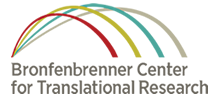
While this time of year is full of social engagements and holiday cheer for many, it is also the darkest and coldest time of the year, especially for those living in northern latitudes. While most people undergo physical changes in the winter, such as lower energy levels, sleepiness, and increased appetite, approximately 1 in 10 individuals experience something more serious–seasonal affective disorder, or SAD.
SAD is not simply the winter blues. It’s a form of clinical depression that coincides with the change in seasons. It includes specific symptoms such as daily feelings of hopelessness, loss of interest in activities, sluggishness and low energy, trouble falling asleep or oversleeping during the day, or even thoughts of death or suicide. To be diagnosed with SAD, you must experience these symptoms two years in a row.
Why does this happen? People with SAD have more extreme reactions to the reduction in daylight; their brains produce too much of the sleep hormone melatonin and too little of the feel-good hormone serotonin. The imbalance leads to feelings of lethargy, overeating, and social withdrawal.
The treatment options for seasonal depression include the same therapies used with other types of depression: prescription medications and cognitive behavioral therapy. But there is a third option as well–light therapy, which involves sitting in front of a light that mimics sunlight each morning.
It’s difficult to collect high-quality data about light therapy because researchers have not found a foolproof way to create a placebo condition for sitting in front of a bright light each day. But researchers have created randomized controlled trials exposing a control group to lower light levels.
The most recent systematic review on the topic was published in 2020. The review includes 19 randomized clinical trials designed to determine whether light therapy helped to improve symptoms of SAD. The studies compared bright light therapy–1000 lux or higher–to lower light or sham light exposure.
Their analysis found that bright light therapy is an effective treatment for SAD. Exposure to a bright light of 1000 lux or higher for at least a half hour a day yielded an improvement in depressive symptoms similar to how anti-depression medications work for other types of depression. This is good news because light therapy is relatively affordable and carries little risk of side effects.
If you’re interested in trying light therapy:
- Choose a light with 10,000 lux or more. For reference, a sunny day provides about 50,000 lux.
- Don’t stare directly into the light. You can use your time in front of the light to do other activities, including reading, watching television, or eating a meal.
- Try to get about 30 minutes of light each day.
- Use your light in the morning, if possible, to help stimulate those wake-up and feel-good hormones earlier in the day.
The take-home message: Seasonal depression is a real problem for millions of people. Light therapy is a potential solution that helps improve symptoms for many who experience this problem.


